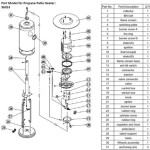Large Potted Plants: Enhancing Patios with Greenery and Style
Large potted plants offer a versatile and aesthetically pleasing solution for transforming outdoor patios into inviting and vibrant living spaces. They provide a way to introduce greenery, texture, and height to otherwise barren surfaces, effectively softening hardscapes and creating a more natural ambiance. Unlike in-ground planting, large pots offer portability, allowing for easy rearrangement and adaptation to changing seasons or design preferences. The selection of appropriate plant varieties and pot styles can significantly enhance the overall aesthetic appeal of a patio, reflecting personal style and complementing architectural features.
The use of large potted plants is not merely a decorative choice; it also offers practical benefits. They can provide shade, improve air quality, and create a sense of privacy. Furthermore, they offer a controlled growing environment, minimizing the risk of soil contamination and allowing for precise management of watering and fertilization. This is particularly beneficial in areas with poor soil quality or limited space for traditional gardening.
Selecting the right large potted plants for a patio involves careful consideration of several factors, including climate, sunlight exposure, desired aesthetic, and maintenance requirements. Understanding these considerations is crucial to ensuring the long-term health and beauty of the plants, as well as the overall success of the patio design.
Selecting the Right Plants for Your Patio
Choosing appropriate plants for large patio pots requires careful consideration of environmental factors and individual preferences. The climate of the region is a primary determinant, dictating the types of plants that can thrive outdoors year-round. Sunlight exposure is another critical factor. Different plants have varying light requirements, ranging from full sun to partial shade to full shade. Selecting plants that are suited to the specific sunlight conditions of the patio is essential for their health and growth.
Consider the overall aesthetic goals for the patio. Do you prefer a lush, tropical look, a formal, structured design, or a relaxed, informal arrangement? Different plant varieties can contribute to different styles. For instance, palms and ferns can evoke a tropical feel, while boxwoods and topiaries can create a formal ambiance. Ornamental grasses and flowering perennials can add texture and color to a more informal setting.
Maintenance requirements should also be factored into the selection process. Some plants require more frequent watering, fertilizing, and pruning than others. If time and resources for plant care are limited, it is best to choose low-maintenance varieties that can tolerate neglect. Drought-tolerant plants, such as succulents and certain grasses, are particularly well-suited for areas with limited access to water.
Here are some examples of plant types suitable for large patio pots, categorized by their light requirements:
*Full Sun (6+ hours of direct sunlight):
* Citrus trees (lemons, limes, oranges) * Olive trees * Rosemary * Lavender * Hibiscus * Bougainvillea * Succulents (e.g., Agave, Echeveria) *Partial Sun/Partial Shade (3-6 hours of direct sunlight):
* Hydrangeas * Fuchsias * Geraniums * Hostas (in hotter climates, choose shade varieties) * Begonias * Japanese Maples (protect from harsh afternoon sun) *Full Shade (Less than 3 hours of direct sunlight):
* Ferns (e.g., Maidenhair, Boston) * Impatiens * Coleus * Calathea * Cast Iron Plant (Aspidistra elatior)When selecting plants, consider their mature size and growth habit. Choose plants that are appropriately sized for the pots and the available space on the patio. Avoid overcrowding, as this can restrict airflow and increase the risk of disease. Remember that plants will grow over time, so allow for adequate spacing between pots.
Choosing the Right Pots: Material, Size, and Drainage
The selection of appropriate pots is as important as the selection of the plants themselves. The material, size, and drainage of the pot significantly impact the health and well-being of the plants.
Pots are available in a variety of materials, each with its own advantages and disadvantages:
*Terracotta:
A classic and porous material that allows for good airflow and drainage. Terracotta pots can be heavy and prone to cracking in freezing temperatures. *Plastic:
Lightweight and inexpensive, plastic pots are available in a wide range of colors and styles. They retain moisture well but can become brittle and crack over time. *Resin:
A durable and weather-resistant material that mimics the look of terracotta or stone. Resin pots are lightweight and relatively inexpensive. *Concrete:
A heavy and durable material that is ideal for large plants. Concrete pots can be expensive and difficult to move. *Metal:
Offers a modern and stylish look. Metal pots can heat up quickly in direct sunlight, potentially damaging plant roots. *Fiberglass:
Lightweight, durable, and weather-resistant. Fiberglass pots can be expensive but offer a long-lasting and attractive option.The size of the pot should be proportional to the size of the plant and its root system. A general rule of thumb is to choose a pot that is at least as wide as the plant's canopy. For larger plants, consider using pots that are significantly larger to allow for ample root growth. Insufficient pot size can lead to root-bound conditions, stunting plant growth and reducing overall health.
Adequate drainage is crucial for the health of potted plants. Excess water can lead to root rot, a common and often fatal condition. Ensure that the pot has drainage holes at the bottom to allow excess water to escape. A layer of gravel or broken pot shards at the bottom of the pot can also improve drainage.
Consider the overall design and aesthetic of the patio when choosing pot styles. Match the pot style to the architectural features of the house and the overall landscaping design. For instance, sleek, modern homes may benefit from minimalist concrete or metal pots, while more traditional homes may be complemented by terracotta or resin pots that mimic the look of natural stone.
Maintaining Large Potted Plants on a Patio
Proper maintenance is essential for ensuring the long-term health and beauty of large potted plants on a patio. Regular watering, fertilization, pruning, and pest control are all important aspects of plant care.
Watering frequency depends on several factors, including the type of plant, the weather conditions, and the type of pot. Generally, plants in terracotta pots require more frequent watering than plants in plastic pots due to the greater porosity of terracotta. During hot, dry weather, plants may need to be watered daily or even twice a day. Check the soil moisture regularly by inserting a finger into the soil. If the soil feels dry to the touch, it is time to water.
Fertilization is important for providing plants with the nutrients they need to thrive. Use a balanced fertilizer that is specifically formulated for the type of plant being grown. Follow the instructions on the fertilizer package carefully to avoid over-fertilizing, which can damage plant roots. A slow-release fertilizer can provide a steady supply of nutrients over a longer period.
Pruning is necessary for maintaining the shape and health of plants. Remove dead, damaged, or diseased branches regularly. Prune flowering plants to encourage new blooms. Prune shrubs and trees to maintain their desired shape and size. Use sharp, clean pruning shears to avoid spreading disease.
Pest control is an important aspect of plant maintenance. Inspect plants regularly for signs of pests, such as aphids, spider mites, and whiteflies. Treat infestations promptly with insecticidal soap or other appropriate pesticides. Consider using organic pest control methods whenever possible to minimize the use of harsh chemicals. Encourage beneficial insects, such as ladybugs and lacewings, to help control pest populations.
Repotting may be necessary every few years as plants outgrow their pots. When repotting, choose a pot that is slightly larger than the previous one. Use fresh potting soil that is specifically formulated for the type of plant being grown. Gently loosen the roots of the plant before repotting to encourage new growth.
Protect plants from extreme weather conditions. Move pots to a sheltered location during severe storms or freezing temperatures. Provide shade for plants that are sensitive to direct sunlight. Consider using frost blankets or other protective measures to protect plants from frost damage.
By following these maintenance tips, you can ensure that your large potted plants thrive and enhance the beauty of your patio for years to come. The consistent application of these practices will contribute significantly to the vitality and longevity of the plants, creating a lush and inviting outdoor space.

Make A Statement Best Extra Large Pots For Indoor Outdoor Plants Flower Power
:strip_icc()/102004263-41bff9fff7d04880bbac446ad66ab8e2.jpg?strip=all)
Best Tropical Flowers For Your Patio

Make A Statement Best Extra Large Pots For Indoor Outdoor Plants Flower Power

20 Best Patio Plants Outdoor Ideas

20 Best Patio Plants Outdoor Ideas

Large Extra Garden Plant Pots Taylor Made Planters

Make A Statement Best Extra Large Pots For Indoor Outdoor Plants Flower Power

24 Stunning Container Garden Planting Ideas A Piece Of Rainbow

20 Best Patio Plants Outdoor Ideas

Elegant Palms For Every Setting Costa Farms Patio Plants Container Gardening Outdoor Flowers
See Also








